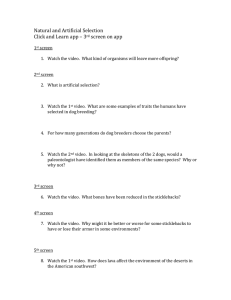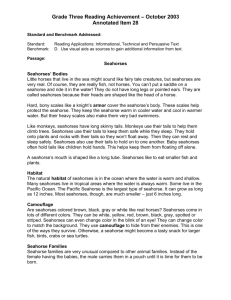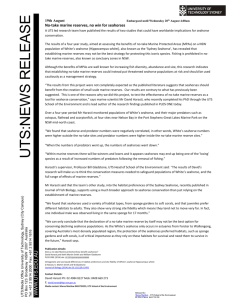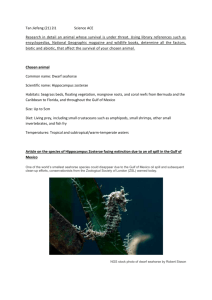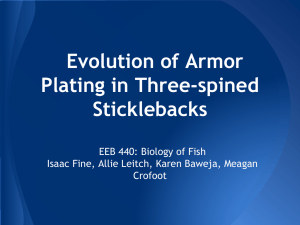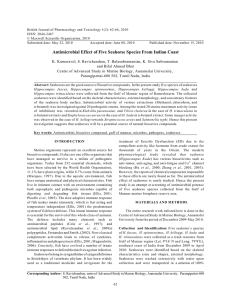Grace Ballou Order: Gasterosteiformes “gaster”=stomach in Greek
advertisement
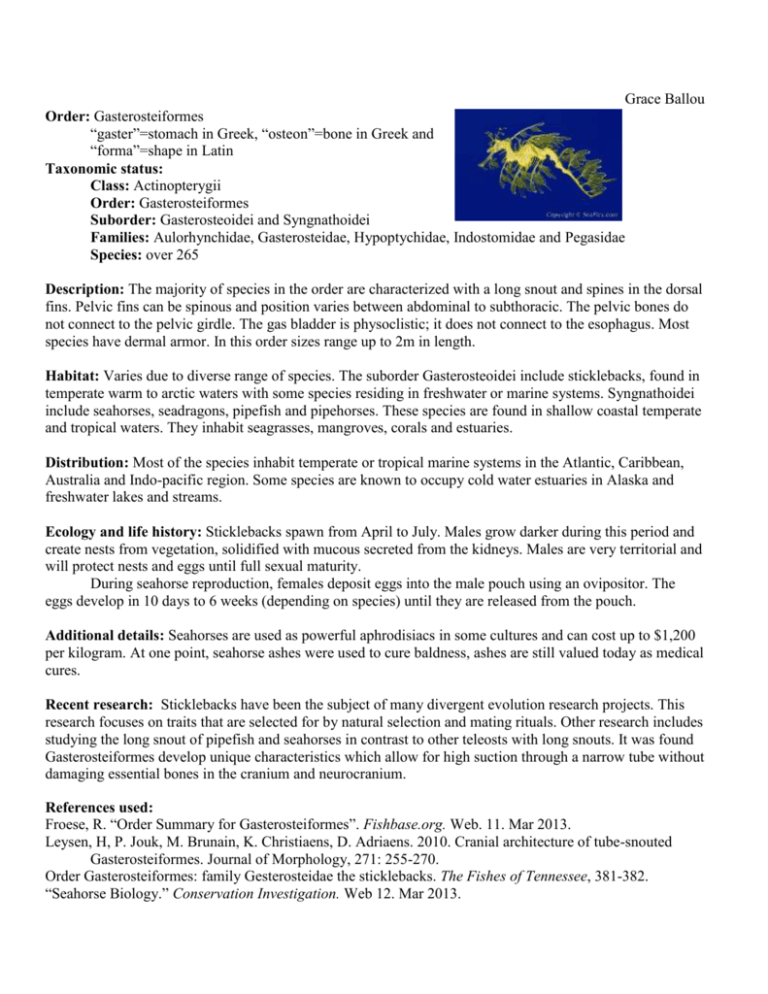
Grace Ballou Order: Gasterosteiformes “gaster”=stomach in Greek, “osteon”=bone in Greek and “forma”=shape in Latin Taxonomic status: Class: Actinopterygii Order: Gasterosteiformes Suborder: Gasterosteoidei and Syngnathoidei Families: Aulorhynchidae, Gasterosteidae, Hypoptychidae, Indostomidae and Pegasidae Species: over 265 Description: The majority of species in the order are characterized with a long snout and spines in the dorsal fins. Pelvic fins can be spinous and position varies between abdominal to subthoracic. The pelvic bones do not connect to the pelvic girdle. The gas bladder is physoclistic; it does not connect to the esophagus. Most species have dermal armor. In this order sizes range up to 2m in length. Habitat: Varies due to diverse range of species. The suborder Gasterosteoidei include sticklebacks, found in temperate warm to arctic waters with some species residing in freshwater or marine systems. Syngnathoidei include seahorses, seadragons, pipefish and pipehorses. These species are found in shallow coastal temperate and tropical waters. They inhabit seagrasses, mangroves, corals and estuaries. Distribution: Most of the species inhabit temperate or tropical marine systems in the Atlantic, Caribbean, Australia and Indo-pacific region. Some species are known to occupy cold water estuaries in Alaska and freshwater lakes and streams. Ecology and life history: Sticklebacks spawn from April to July. Males grow darker during this period and create nests from vegetation, solidified with mucous secreted from the kidneys. Males are very territorial and will protect nests and eggs until full sexual maturity. During seahorse reproduction, females deposit eggs into the male pouch using an ovipositor. The eggs develop in 10 days to 6 weeks (depending on species) until they are released from the pouch. Additional details: Seahorses are used as powerful aphrodisiacs in some cultures and can cost up to $1,200 per kilogram. At one point, seahorse ashes were used to cure baldness, ashes are still valued today as medical cures. Recent research: Sticklebacks have been the subject of many divergent evolution research projects. This research focuses on traits that are selected for by natural selection and mating rituals. Other research includes studying the long snout of pipefish and seahorses in contrast to other teleosts with long snouts. It was found Gasterosteiformes develop unique characteristics which allow for high suction through a narrow tube without damaging essential bones in the cranium and neurocranium. References used: Froese, R. “Order Summary for Gasterosteiformes”. Fishbase.org. Web. 11. Mar 2013. Leysen, H, P. Jouk, M. Brunain, K. Christiaens, D. Adriaens. 2010. Cranial architecture of tube-snouted Gasterosteiformes. Journal of Morphology, 271: 255-270. Order Gasterosteiformes: family Gesterosteidae the sticklebacks. The Fishes of Tennessee, 381-382. “Seahorse Biology.” Conservation Investigation. Web 12. Mar 2013.
